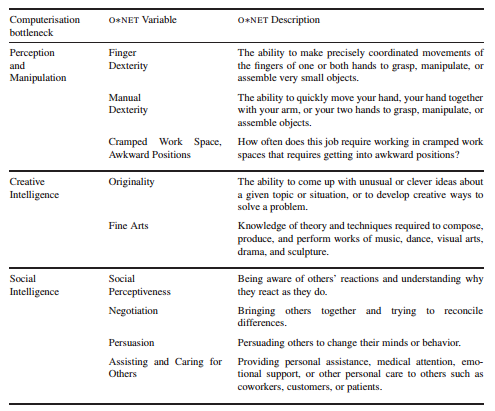As technological progress speeds up, many jobs are becoming susceptible to automation and computerisation. Some jobs, however, are more vulnerable than others, and some may not be automated for a long time, if at all. It’s easy to imagine the concept of a robot judge, with legal facts being input and a “guilty” verdict being displayed on a screen, but robot lawyers are maybe not so likely. In fact, a recent study has shown that in the legal sector, lawyers are the least likely to be automated, while other legal professions may not be so lucky.
What does automation mean?
First, a look at the term “automation”, versus the term “artificial intelligence”. This term is one that carries some ‘baggage’ with it: when people hear “artificial intelligence”, they think of robot lawyers replacing people. A judge-bot instead of a judge. But “automation” and “computerisation” implies a more mundane, enhanced version of current roles, rather than a complete replacement of the role in its entirety.
One personal injury law firm is leading the automation path by hiring in-house programmers to computerise tasks to “help businesses improve their competitiveness and productivity”. Automation of some basic tasks allows their staff to work more quickly, with parts of their jobs becoming autonomous and allowing the staff to focus on other, more complex work. Ed Fletcher, CEO of Fletchers Solicitors believes “that AI will grow in importance”, and that with the technological innovation giving businesses an edge, it’s crucial to “strive to remain at the forefront” of the legal industry.
How likely is it that legal jobs will be automated?
The University of Oxford released a study looking at the likelihood of certain jobs being automated, and found that in the legal sector the jobs most likely to be automated were paralegals and legal assistants, with a 94.5% chance of being automated, court reporters with a 50.2% chance of being automated. Judicial law clerks and judges were the next most-likely to be automated, with a 40.9% chance and 40.1% chance respectively. On the other hand, lawyers were found to have only 3.5% chance of being automated.
Some tasks that are easily automated include narration and document review; why record your thoughts using a dictaphone that you give to a secretary, when you can speak aloud to a computer who types your words for you in real time?
Lawyers are significantly less likely to be automated for a few main reasons. First, their role relies heavily on being able to come up with creative solutions to a client’s problems. A client may arrive in the office with a unique situation that has not been encountered before, and in many cases the facts may be similar to a previous case, but not identical. This requires the lawyer to think carefully about whether those slightly different facts warrant a different solution, and to assess the problem in a creative way to find the best solution for the client.
Another primary factor in the lower likelihood of automation for lawyers is the level of personal, face-to-face contact and rapport-building that comes alongside the relationship between the lawyer and client. Lawyers must build trust with their clients to ensure that they get all the information, which ensures that the client’s interests are at the forefront of everything the lawyer does.
The study found that “for the work of lawyers to be fully automated, engineering bottlenecks to creative and social intelligence will need to be overcome”, which is relatively unlikely in the short to medium term future. Social intelligence is the ability to build relationships, work well with others, and navigate complex social situations. When Apple’s Siri is one of the most socially intelligent artificial intelligence systems we have, it’s clear to see that we’re a long way off from computers becoming smart and empathetic enough to work through a client’s complex, sensitive legal problems.

O*NET variables that serve as indicators of bottlenecks to computarisation
The jobs that are most likely to be automated are those which follow routine, pattern-based paths through the process, “occupations mainly consisting of tasks following well-defined procedures that can easily be performed by sophisticated algorithms”, such as truck drivers and tax preparation experts. When the task is heavily rule-based, a computer can replicate it. With autonomous vehicles becoming increasingly common, driving-related jobs will be able to be taken over by autonomous cars with far fewer accidents, since autonomous cars will follow the road rules to the letter.
Looking towards the future
Computerisation and automation of tasks is now “rapidly entering domains reliant upon pattern recognition and can readily substitute for labour in a wide range of non-routine cognitive tasks”. This means that even less rule-based professions may be increasingly supported by automated processes. The idea of robots taking over our jobs is a scary one, but when you consider the fact that “OK Google” and Siri are parts of this process too, it’s easy to see that much of the automation will be in the form of augmentation, not replacement, at least at first.